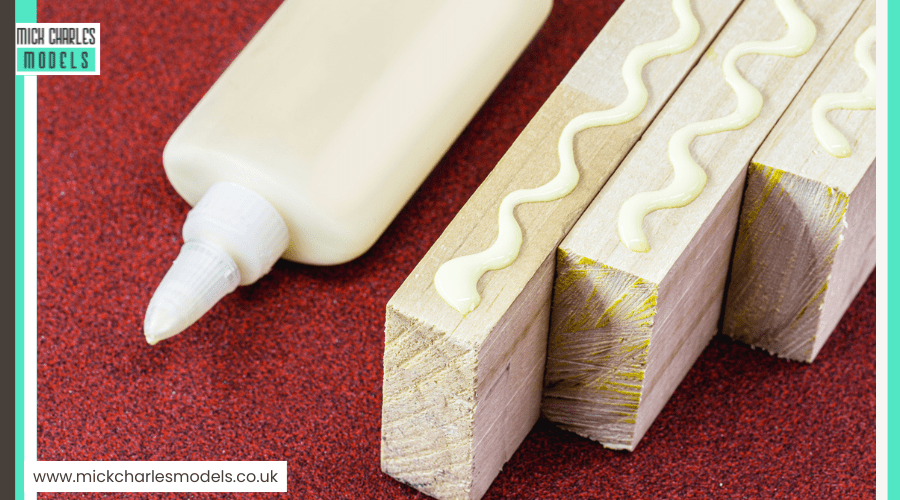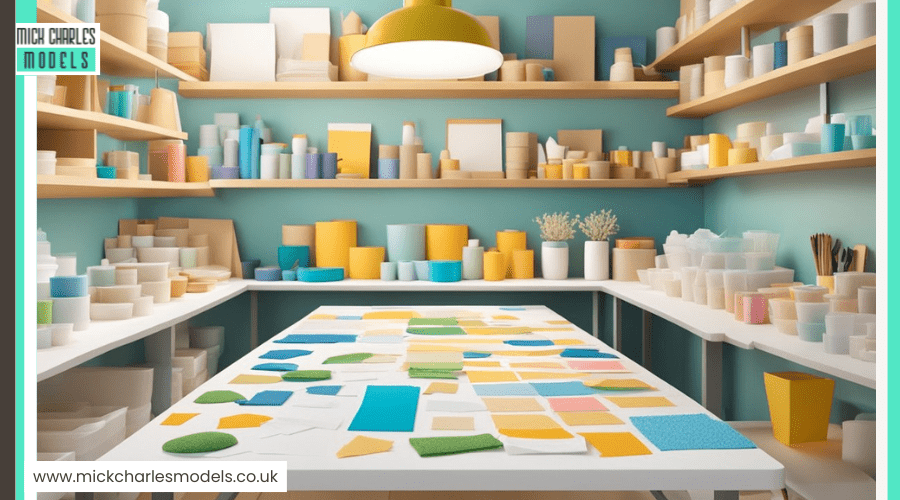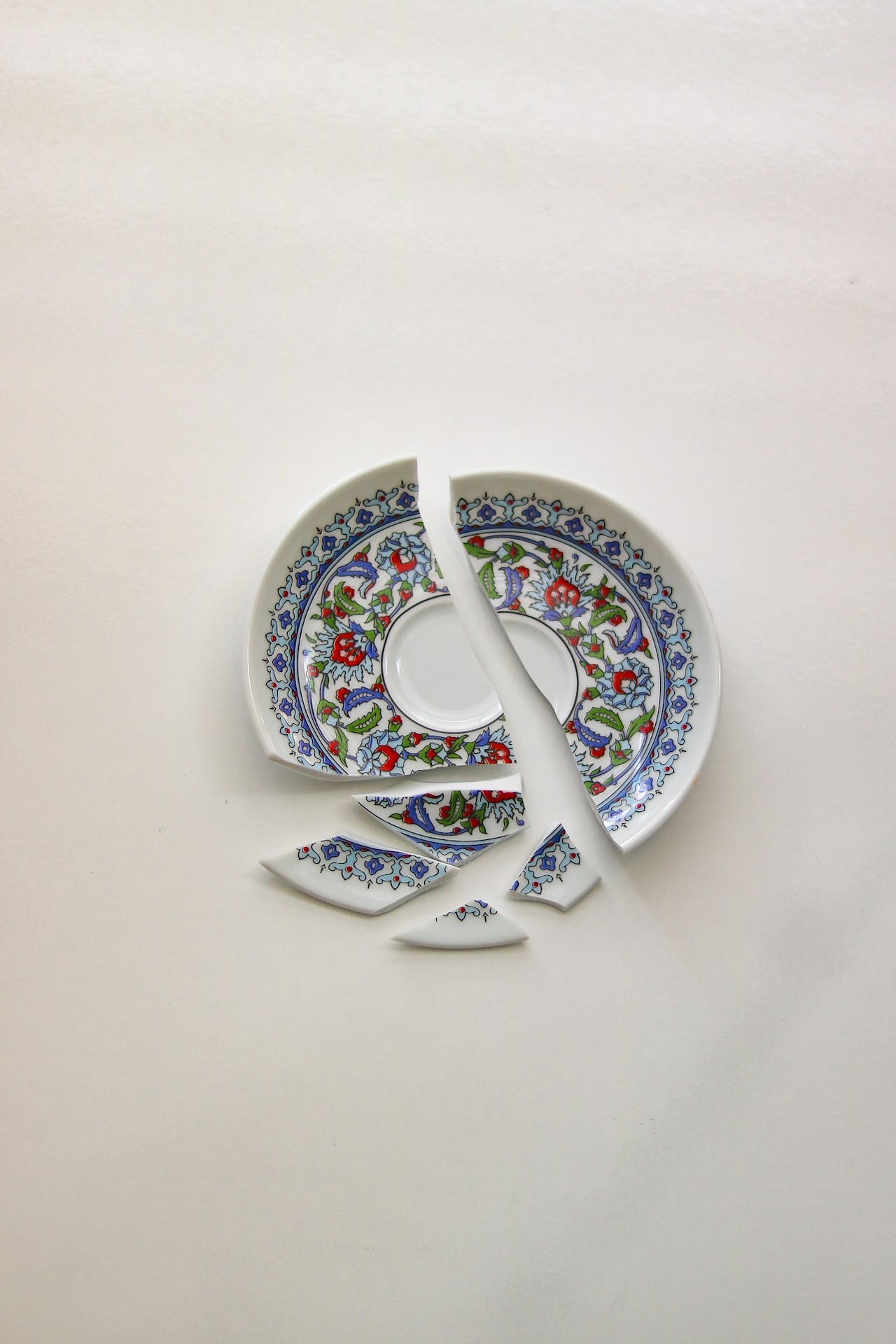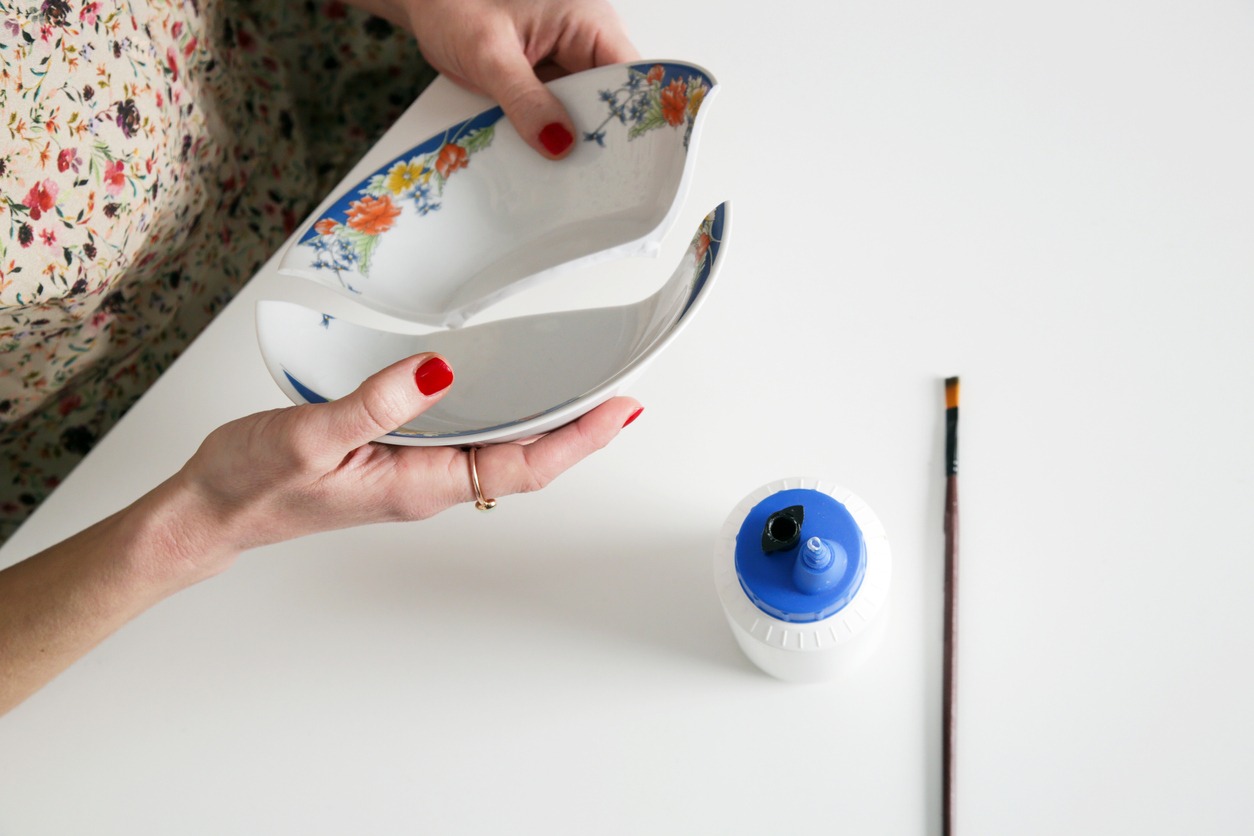Ceramics Projects: Inspiring Ideas for Every Skill Level
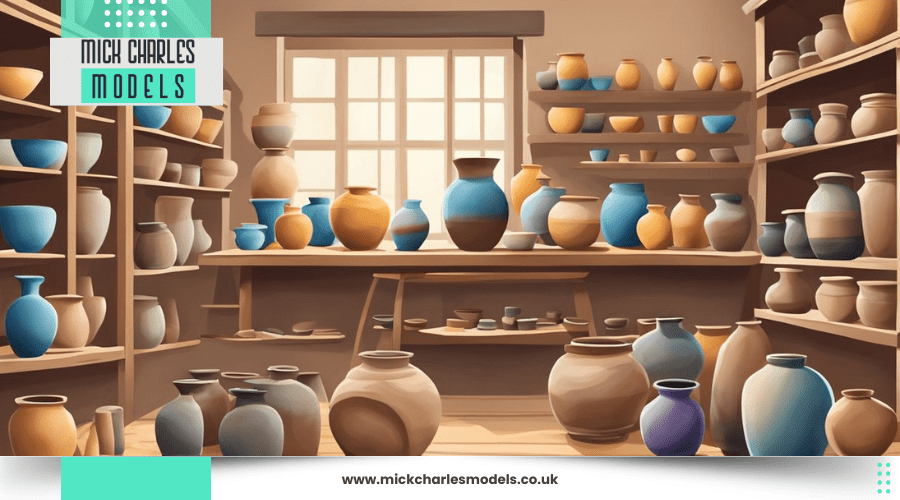
Ceramics have been a significant part of human history, offering insight into cultures and eras through their forms and decorations. They serve both practical and artistic purposes, often holding clues about the past.
In modern times, ceramics remain a popular medium for creative expression. From personalized gifts to intricate home decorations, the possibilities are vast. The craftsmanship involved, from selecting the right clay to finishing techniques, defines each piece's uniqueness and longevity. Whether for beginners or seasoned artists, ceramics provide endless opportunities for imaginative projects.
Jump to Section
Hand-building Ideas
- Pinch pots
- Coil pots
Decorative Pieces
- Mugs
- Bowls
What is a Ceramics Project?
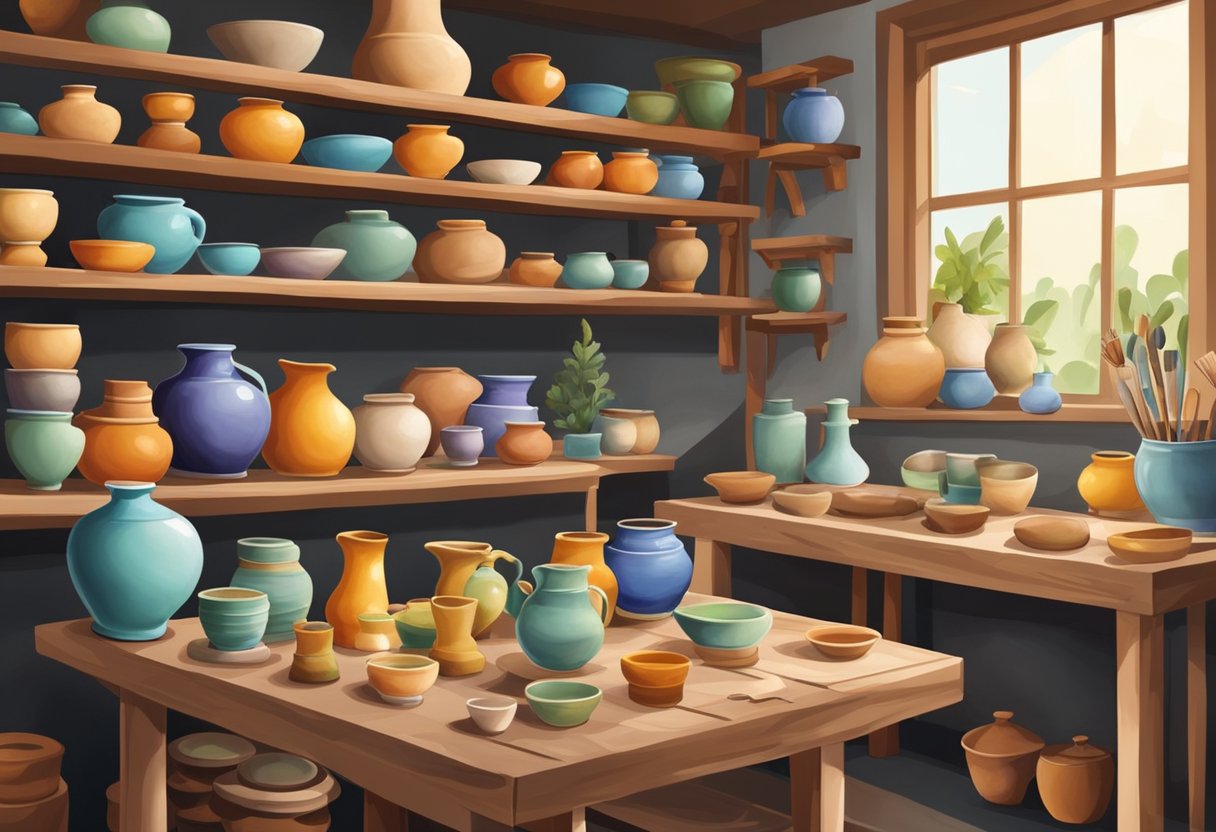
Ceramics involves molding, shaping, and firing clay to create various objects. Those new to ceramics can explore different projects to build their skills.
There are many ceramics projects one can take on, from simple household items to personalized gifts. For example, creating a custom mug for a loved one’s special occasion is a meaningful endeavor. Additionally, ceramics projects can vary based on their purpose and intended recipient, making the craft highly versatile.
Crafting items like bowls, plates, or vases not only enhances skills but also results in functional objects. Whether a person aims to create practical items or artistic pieces, ceramics projects offer both creativity and utility.
Ceramics Projects for Adults
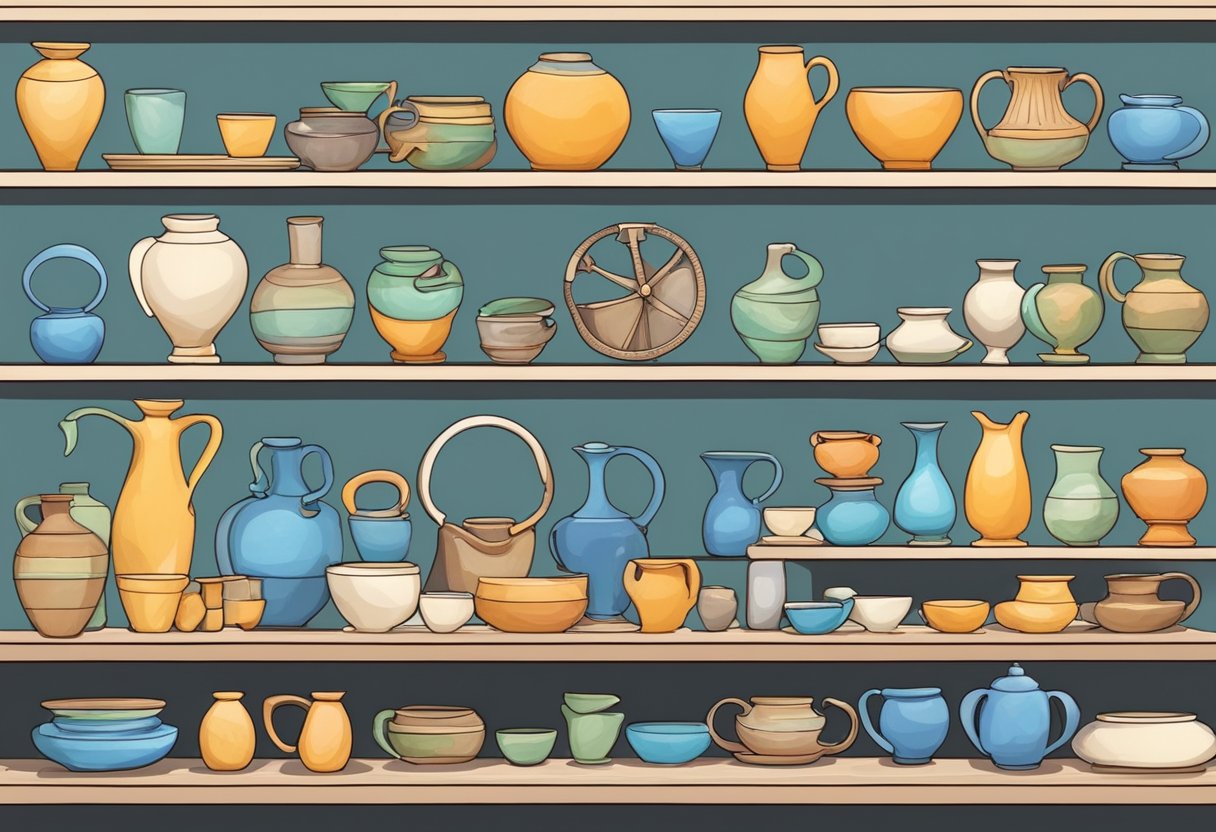
Pottery Classes
For those stepping into the world of ceramics for the first time, joining a local pottery class can be incredibly beneficial. These classes are often guided by skilled instructors who can walk students through the basics and provide the necessary tools. Whether it's the use of a potter’s wheel or glazing brushes, students can take advantage of these resources during class time. The group setting also fosters a sense of community and motivation among participants.
Windchimes
Crafting windchimes is a bit more advanced, making it ideal for adults looking for a challenge. The process begins with shaping five bells of varying sizes and ten uniformly-sized beads from clay. Each bell should be wide enough to nest within the next larger size once assembled. When glazing, remember to leave the rims unglazed to prevent sticking during drying. Holes should be punched in the tops of the bells and through the beads to allow for stringing them together later.
Jewelry
Creating small ceramic jewelry pieces like rings or earrings involves meticulous detail due to their size. Care is needed when shaping rings or forming holes for earring clasps. Air-drying the clay is a simpler alternative to kiln firing. Ceramic necklaces, whether for yourself or as gifts, are another beautiful option. These items provide a delicate introduction to more complex techniques.
Birdfeeders
Birdfeeders offer a unique and adaptable ceramics project. They can vary greatly in design, from simple thrown wheel shapes to elaborate house-like structures. For the latter, techniques such as beveling edges, slip-and-score connections, and creating intricate patterns are employed. These projects are a great way to advance one’s pottery skills and result in beautiful, functional items for the garden.
Busts
Sculpting busts is an excellent way to refine intermediate skills in ceramics. Crafting the human face in clay requires patience and attention to detail. Not only does this improve one’s skill in shaping and carving, but finished busts also make for elegant home decor or memorable gifts. Applying a glaze can add a polished touch to the final piece.
Ceramics Projects for Students
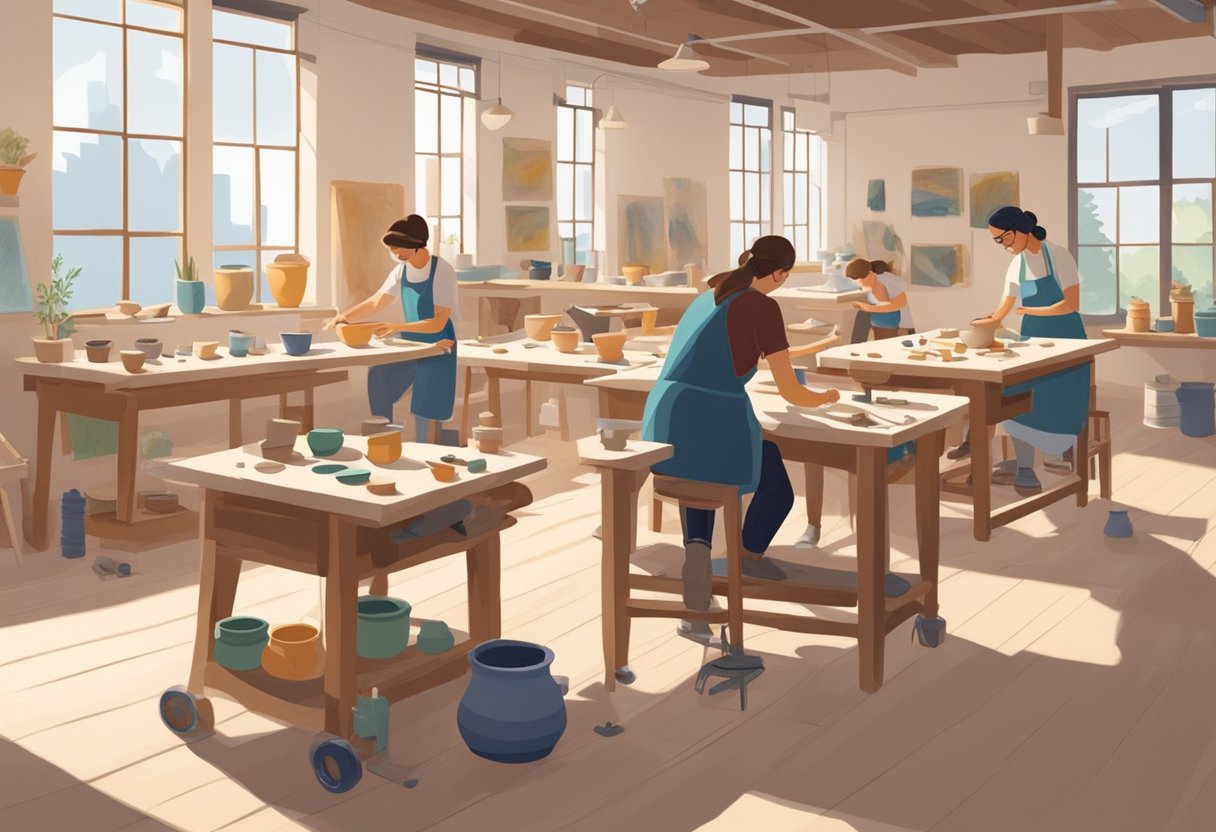
6. Slab-Built Planters
Creating a slab-built planter is an excellent project for beginner pottery students. This technique involves shaping clay into flat sections and assembling them into a container. It's perfect for young and inexperienced potters because any imperfections can enhance the planters' rustic charm when placed outdoors.
7. Egg Holders
Egg holders are practical and simple projects that involve making a small bowl on a stable base, perfect for holding a single hard-boiled egg. These are great to use for traditional breakfasts, like soft-boiled eggs with toast. Kids will find these projects fun and rewarding.
8. Teapots
Making teapots involves crafting different parts, such as a round body, a spout, and a handle. Although it might seem straightforward, fitting all these pieces together to form a cohesive and functional teapot is quite challenging. This project helps students develop their pottery skills significantly. Remember to use food-safe glazes to avoid any harmful chemicals mixing into the tea.
9. Sponge Holders
A sponge holder can be made as simple or complex as desired. From a basic plate or bowl for holding dish sponges to a more intricate design with walls, this project offers plenty of creative flexibility. It's an easy start for beginners and allows for a lot of personalization.
10. Miniature Figurines
Creating small figurines is an enjoyable and challenging project for students. These tiny clay figures require precision and skill, making them perfect for those looking to test their artistry. Once crafted, these figurines can be painted or glazed, providing students with a chance to explore different finishing techniques.
High School Ceramics Projects
Creative Bowls
Bowls are one of the initial projects for beginners. Starting with pinch pots and scaling up, larger bowls require a bit more care when shaping. Selecting a safe glaze is crucial, especially if the bowl will be used for food.
Example: Jewelry bowl with non-toxic glaze.
Unique Plates
Crafting plates involves understanding the slight curve needed to hold food. Whether working on a wheel or by hand, this project challenges even the most eager students. Slip casting can simplify this task by using pre-formed molds.
Tip: Experiment with slip casting for smoother results.
Elegant Cake Stands
Combining skills from making both egg cups and plates, the cake stand poses a wonderful challenge. It must be sturdy and balanced to support a cake. Consider a solid base to ensure stability.
Idea: Create weighted bases for more stability.
Functional Manual Juicers
Manual juicers are handheld or tabletop items featuring a central protrusion for pressing fruit. The unique shape makes this project more challenging. Pay close attention to food-safe glazing techniques to ensure safety.
Advice: Focus on creating a comfortable grip for ease of use.
Ceramics Projects for Kids
15. Custom Clay Stamps
Creating custom clay stamps is an engaging project that kids will love. By molding clay into a stamp shape and designing it with simple carvings, children can craft their own unique stamps. The designs can be simple and fun—whatever the child imagines. Once the stamps are dried, they can be used with ink pads to decorate paper or fabric.
16. Crafting Clay Beads
Making clay beads is a straightforward and enjoyable activity for kids. By pinching and rolling small pieces of clay, children can form various shapes and sizes of beads. These clay beads can then be hand-painted or left natural. After drying, they can be strung together to make necklaces, bracelets, or other types of jewelry, allowing kids to showcase their creativity.
17. Coiled Vase or Cup
A coiled vase or cup is a fantastic project for young pottery enthusiasts. Children can start by rolling a piece of clay into a flat circle for the base. They then roll small sections of clay into long, snake-like coils. These coils are stacked on top of each other to build the walls of the vase or cup, with each coil slightly overlapping the previous one. Once the desired height is reached, the walls can be smoothed out. After drying, the vase or cup can be painted or glazed and then fired.
18. Simple Spoon Rests
Creating a spoon rest is one of the simplest pottery projects suitable for kids. The spoon rest is a handy little dish that holds a spoon in the kitchen. Children can form a flat circular or oval shape out of clay, optionally adding a slight dip in the center to accommodate the spoon. Once the shape is formed, it can be dried, painted, or glazed. After it’s complete, the spoon rest can be used in the kitchen, adding a touch of handmade charm to daily cooking activities.
Ceramics Projects for Beginners
19. Succulent Container
Succulent containers are perfect for those new to ceramics. They typically involve creating pinch pots, which are simple and fun to make. Adding drainage holes can help with plant health, and you can adjust the size and depth as needed. Unlike other pottery, they don't need to be food safe, making them even easier to create.
20. Small Dish for Trinkets
Crafting a small dish for trinkets is similar to making wide pinch pots or small bowls. They are perfect for holding keys, small toys, or even collectibles like crystals and stones. This project is straightforward and leaves room for creative expression.
21. Spreader Cover and Base
A spreader cover and base are great starter projects, involving the creation of a base similar to a small dish but with an added cover. You can get creative with the designs and even add a handle. This project helps you practice creating multiple pieces that fit together.
22. Candle Stands
Candle stands are a delightful project, especially for those who enjoy old-fashioned tapered candles. They are simple and quick to make, with a basic shape resembling a wide-based pinch pot. Since they don't need to be food-safe, glazing is less complex. These stands add a cozy touch to any dining table.
23. Drinking Vessels and Small Pots
Creating drinking vessels and small pots is essential for beginners. Start with basic pinch pots, and for a bit more challenge, expand their size into mugs. Adding handles is another way to advance your skills. These vessels can have various uses, such as small pots for sewing or thimbles, or even shot glasses.
Common Questions about Ceramics Projects
How Do Ceramics and Pottery Differ?
Ceramics and pottery are terms often used interchangeably, but they refer to different things. Ceramics encompass any items crafted from clay and then fired. Pottery, however, specifically refers to functional vessels like bowls, vases, and jars.
Several techniques are essential in ceramics. The "slab-built" technique involves constructing objects from flat pieces of clay. This method doesn't use a potter's wheel, which sets it apart from the "throwing" technique. Another critical technique is the "slip and score method." In this method, the surface of the clay is scratched to create a rough texture. Liquid clay or another binding agent is then applied before joining two pieces of clay together.
"Glazing" is a process where a liquid coating is applied to the surface of a ceramic piece. This glaze can add color and texture, and it also makes the item food-safe if the right materials are used. The piece is then fired in a kiln to harden the glaze.

